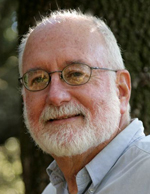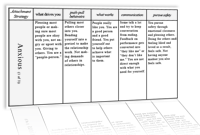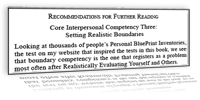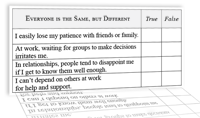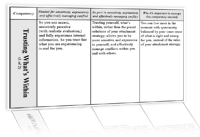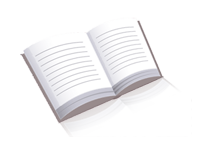No More Faceplants Science
The research suggests Attachment Theory is Psychology’s
Model of Human Behavior
Attachment Theory is a "big"(1) theory of human behavior, which interests both clinicians and the general public. Big theories provide explanations of behavior that are universal.
With the exception of Attachment Theory, clinical psychological/psychoanalytic big theory almost always has been developed using small group case-study models, which use observations of a limited sample with interpretation of its often highly-subjective data, usually by a single theorist, who then generalizes the conclusions to the larger population. This is done without extensive corroborative research into the theory’s validity or its reliability. The absence of rigid experimentation in the development of other big theories and the lack of a central model explaining human behavior have kept clinical psychology, psychoanalysis and psychology, in the public’s mind at least, as more of a philosophy than a science, rendering it somewhat less useful than would be ideal.
Attachment Theory is based on empirical research conducted over more than a 60 year period by thousands of scientists working in some 50 countries. That being so, Attachment Theory follows the “scientific method” common to other sciences. Furthermore, the better one understands Attachment Theory, the easier it is to use to integrate and organize other science related to human behavior.
Attachment Theory has been different from the outset in that scientists developed several types of tests of the attachment strategies, used the tests to validly and reliably place infants and, later, adults, into the different groups of attachment strategies, and then looked at the behaviors of the people in the these groups to see with which qualities the differences in behavior were associated. For instance, did different attachment strategies affect medical conditions or work performance, as well as romantic relationship performance? The answer to all three is yes.
More recently, with the advent of the ability to correlate brain behavior using functional MRIs (fMRIs) with the observable behaviors of people classified into the different attachment strategies, scientists have been able to see behavior both externally and internally, with explanatory linkages between the two. Finally, we have a big theory that is hard-science-based.
I believe macro-psychological theory now is about at the place where medical theory was when medical scientists first began to develop workable models of what caused diseases and created treatments that ameliorated the conditions, based on those models.
Attachment Theory is now, and will continue, on a path to establish an integrated and fully-accepted motivational model of human behavior.
So then, what’s in this listing of references? It includes a variety of published works in order to give a good background in understanding Attachment Theory. There are literally thousands of individual studies and books on Attachment Theory available. First, a carefully selected short-list will provide an introduction to the literature of the discipline, both to help you understand the depth and breadth of Attachment Theory, and to learn what supports it scientifically and theoretically.
I believe that it’s of primary importance to understand the major assumptions of the theory, as developed by its creator, John Bowlby, MD, so this is covered in the first section below. The second and third groups of readings focus upon further assumptions embedded within Attachment Theory.
The remainder of the references is organized into categories to help you see how scientists with varied interests have studied Attachment Theory and used the research results to better understand their areas of explanation of human behavior. You may be amazed at how well Attachment Theory predicts the probability of stress related and chronic medical diseases, and most other problems in living…that so many of us hope that a magic pill will fix.
- My take away from the research is that:
- It is not likely that we will solve our behaviorally based medical epidemics with medications,
- That most psychotherapy for most people should really focus on the person’s management of their relationships with them selves and with those emotionally important to them, and
- Attachment Theory, in it’s two basic forms (Clinical Psychology and Social Psychology) provides models for understanding our most basic motivations, goal achieving behaviors and self defeating behaviors as well as models of behavioral change.
To mental health professionals reading this: I believe Psychology will never be considered a true science, though there are thousands of Psychologist scientists, until we agree on a general model of human behavior. If you disagree, let’s discuss it on the blog. And if you agree with that assertion but believe another model is a better predictive model let me offer a challenge: Present another theory with this depth and scope of research.
(1) The “big” and “small” terms refer to the breadth of scope addressed, not to relative value. Big theories focus on motivation as the driving force of behavior, small theories do not. 378 No More Faceplants
Following this selected listing of studies, I will try to keep a last section or research reasonably up to date with research as it is published.
